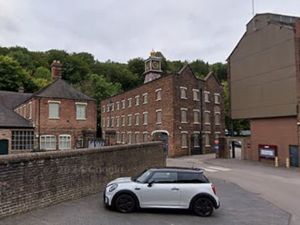Ironbridge Power Station: Demolition is a 'fascinating process'
The beginning of the first stage of demolition of the Ironbridge Power Station marks the beginning of a “fascinating process” according to councillors.
The clearing of the site, which has significance to both Shropshire Council and Telford & Wrekin Council, will help to determine its future, it has been claimed.
It comes as an application has been submitted by owners Uniper to demolish a small section of the site this autumn, with the full site including the cooling towers to be cleared at the start of next year.
Uniper, which took over the decommissioning of the site from energy company Eon, says conveyors 6 and 7 and the accompanying conveyor tower need to be brought down because they are deteriorating structurally, and will help make way for the future demolition.
The plant was officially switched off on November 20 2015, after 46 years of service, following an EU directive.
Under the EU, ageing plants like Ironbridge were legally limited in the emissions they can produce and its operating hours were restricted in 2008.
The EU’s Large Combustion Plant Directive said the station had to end its life after passing the milestone of generating power for a total of 20,000 hours since January 1, 2008,
So far, there has been mixed reactions to the potential loss of its iconic pink cooling towers, with many saying they would miss such an iconic feature of the Ironbridge Gorge.
Councillors and groups from both Shropshire and Telford & Wrekin are hoping to work with Uniper on the future of the site, which is one of the most important in both council areas.
They now say they will work together, as demolition begins, to ensure neighbours living around the plant are not affected.
Councillor Nicola Lowery, Telford & Wrekin Council ward member for the Ironbridge Gorge said: “This marks the start of fascinating process for the former power station site as the site begins its transformation that will determine the future for this strategic site.
“The opportunities and potential that exists within this site is significant.
“However, this is a highly complex site and presents a number of challenges as the former power station is demolished.
“While the former Ironbridge Power Station sits within Shropshire Council’s boundary it is vital that the World Heritage Site is considered as part of the demolition phase and for future use proposals.”
Councillor Lowery added: “I continue to work closely with Councillors Claire Wild and David Turner to ensure that the demolition does not adversely affect the local communities across our boundaries and we shall continue to work with both local council’s to ensure minimal impact to our road networks, land, air and water during the demolition process.
“Demolition is necessary to permit safe demolition of the remaining main power station site and any future redevelopment. However, this is in advance of the main demolition phase which is subject to a current EIA Screening process.
“As the ward member for the Ironbridge Gorge my priority is to ensure that the demolition does not adversely impact our local communities.
“I shall continue to work with my elected colleagues and officers from both councils to consider the proposed traffic management plan and routes, impacts assessment and hours of operation.
“Looking forward, the future of the former Ironbridge Power Station and the opportunities that it presents for economic growth has been the subject of much recent discussion, as the future use of such a strategic and instrumental site must be approached with sensitivity and vision to ensure we fully consider the potential of the Ironbridge Power Station.”
Councillor David Turner, ward member for Much Wenlock on Shropshire Council said: “Traffic will clearly have an impact on local occupiers, and in Buildwas Road in particular.
“While this provides detail of primary routes, I remain cautious that this description does not leave the way clear for secondary routes to use the ancient and narrow Sheinton Street in Much Wenlock’s conservation area that carries the A4169 southwards. I shall be observing this closely.
“It is, of course, necessary to carry out this work in order that the site can be sold and re-used but, given the relatively small area affected by these works, it is an indication of the enormous challenge that clearing the remainder of the site will entail.”





